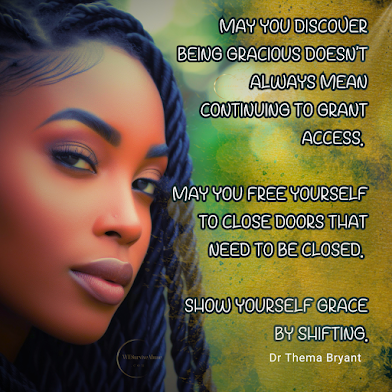Some harms don’t happen in isolation. They happen because someone was let in who shouldn’t have been.And then, no one shut the door behind them. In
 Some harms don’t happen in isolation.
Some harms don’t happen in isolation.
They happen because someone was let in who shouldn’t have been.
And then, no one shut the door behind them.
In law and policy, this is often called the floodgate effect—
The idea that once one is allowed through, many more will follow…
And it becomes impossible to control what happens next.
But we don’t need a law book to understand that.
We’ve lived it.
🎉 Think About a Teen Party
Many a teen party started out joyful and safe.
Kids invited their friends. People were dancing, eating, laughing.
Then someone showed up who wasn’t invited.
And they brought others. Maybe older. Maybe angry. Maybe already carrying harm.
And just like that—
The whole mood shifted.
Violence broke out.
Someone ended up hurt—or worse, never made it home again.
It wasn’t the kids who were invited that ruined it.
It was the unchecked access.
The lack of boundaries.
The floodgate that swung open.
🎓 From Campus to Chaos
I’m from a college town.
We used to walk through the campus as kids—looking up to the students, watching the marching band, dreaming our way into the future. Just the perimeter. We certainly couldn’t go into the buildings.
But that changed.
Now the campus is closed to outsiders.
Why?
Because too many people who didn’t belong showed up and took advantage of the space. Brought envy, chaos, and violence too.
Not everyone respects what a space is meant to be.
And when boundaries aren’t honored, safety is what disappears.
🧠 Why This Matters in Abuse Conversations
This is exactly how abuse often happens.
-
One person tests the boundary.
-
They face no consequence.
-
Others see that—and take it as permission.
What should have been safe becomes dangerous.
Not because of the ones who belonged in the space…
But because the door was left open, and no one was watching it.
🩸 And Then We Blame the Wrong People
We blame the party.
We blame the girls.
We blame the vibe.
But we don’t talk about the floodgate.
We don’t ask: Who opened it? Who left it open? Why didn’t anyone stop the flow?
✊🏾 Let’s Remember:
Safety requires boundaries.
Community requires discernment.
And healing begins when we tell the truth about who opened the door—and who let them stay.
✊🏾 Reframing the Floodgate Effect for Truth-Telling:
Truth works like water. When one Survivor speaks, others feel the current. Silence breaks. Stories flow. And justice, if we let it, can rise like a river.
🛡️ Affirmations for Protecting Myself Without Apology
🔸 I am allowed to protect myself—even if no one else understands why.
🔸 I don’t wait for harm to prove itself. If it feels unsafe, that’s enough.
🔸 I am not here to make others comfortable. I am here to keep myself safe.
🔸 I can shut the door without permission. I don’t need a committee to say yes to my boundaries.
🔸 I trust my instincts. They have saved me before—and they’ll protect me again.
🔸 I do not explain or justify why I say no. No is protection. No is sacred.
🔸 I won’t leave the door open for people who bring danger into my life.
Not anymore. Not ever again.
🔸 I am not overreacting. I am responding like someone who deserves to be safe.
🔸 I have the right to walk away, to speak up, to lock the door—without guilt.
🔸 I will not keep myself exposed to harm just to avoid being called “mean,” “paranoid,” or “too much.”
🔸 When I protect myself, I teach others how to value me.
🔸 I am not selfish. I am not rude. I am sovereign.
🔸 I don’t owe anyone access to my peace, my body, my home, or my trust.
🔸 I will not be the open door. I am the locked gate with a sign that says:
“This space belongs to someone worthy of safety. Proceed with truth or not at all.”
